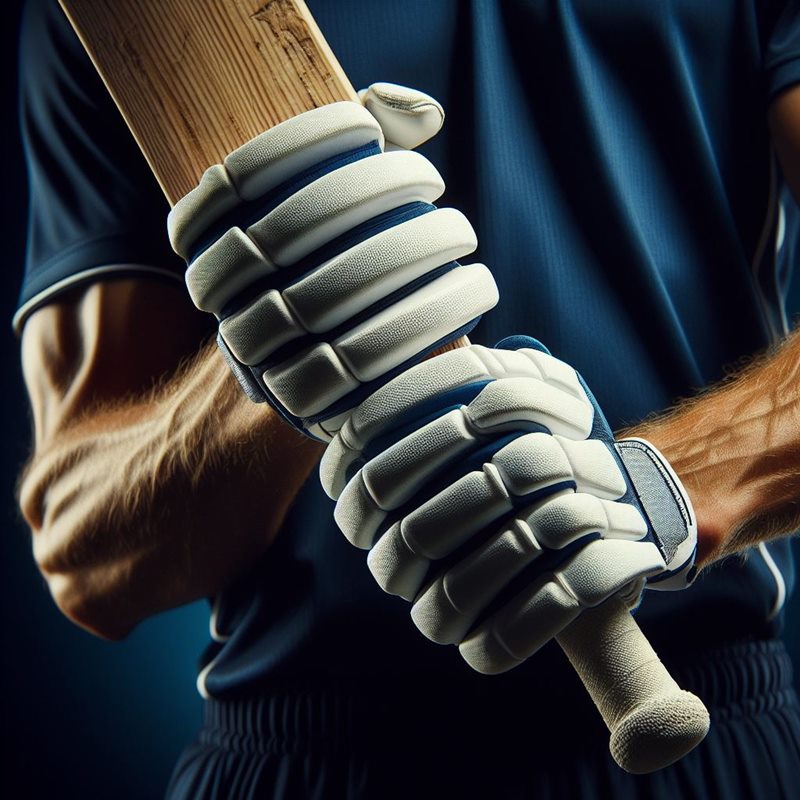Cricket has been around for a long time, evolving over the decades and centuries into the game it is today, intertwining tradition with innovation. In amongst the heart of this changing game lies the art of batting.
Batting requires finesses, technique and precision. Cricketers who are newly embarking on this journey, or those who have been on it for a long time, need to understand the fundamental aspects of batting technique.
And that begins with: how to hold on to a cricket bat.
Understanding the importance of proper batting technique
Batting isn’t merely about wildly swinging at the ball and hoping you hit it a long way. It’s a craft that demands understanding of technique. A solid batting technique serves as the foundation upon which any batter, whether opener, middle order, T20 master blaster, or test match grinder, builds their innings. It’s what allows them to survive each ball, and not just survive, but thrive, withstanding the challenges posed by bowlers across a multitude of various conditions.
From the rudimentary beginnings of cricket in the 16th century, the art of batting has undergone a remarkable transformation. Early batters relied on rudimentary equipment and unrefined techniques, and gradually the batter’s approach to the sport evolved.
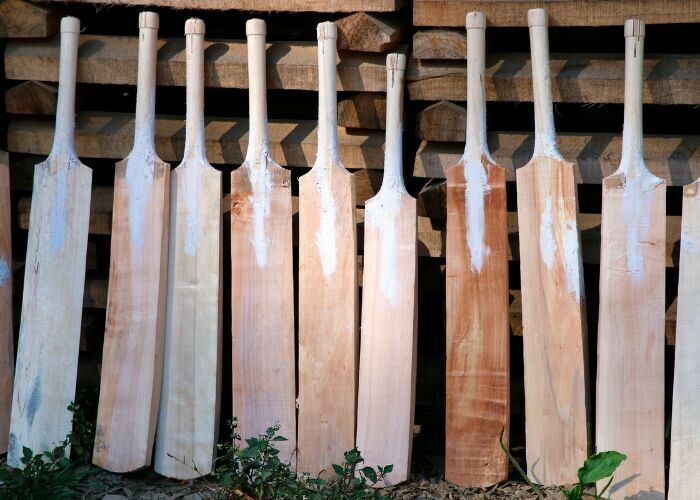
The cricket bat has been at the centre of this evolution. Crafted from willow, it began in primitive form, barely more than a hunk of wood. Now, the bat is sleek and aerodynamic; its weight, balance and grip play absolutely crucial roles in determining a batter’s ability to execute their shots with precision and power.
By understanding how to best grip your cricket bat, aspiring cricketers can lay a solid foundation for their batting prowess, setting themselves on a path towards mastering the art of cricket batting.
Before we get down to the nitty gritty of hand placement, the size and weight of the cricket bat itself is very important. A bat that’s too heavy or too light can hamper a player’s ability to make proper shots at the proper time. We previously wrote a couple of posts that discussed what a player should look for in relation to the size and weight of a cricket bat.
Proper placement of fingers and thumb.
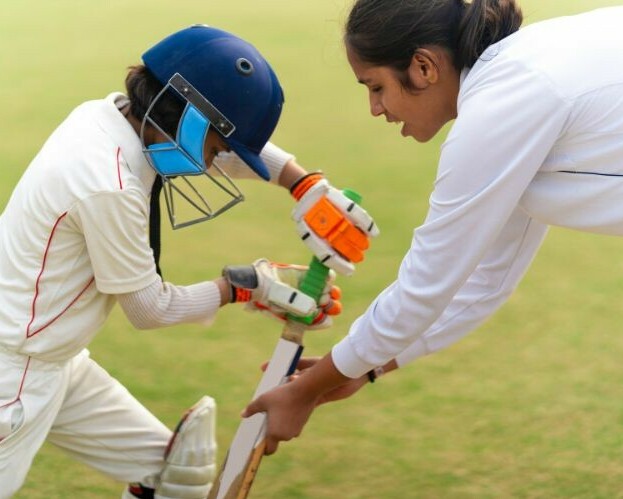
Once you’ve found a suitable bat, let’s get to the meat of this blog post. How to grip it correctly.
This involves wrapping the fingers around the handle in a way that provides both stability and flexibility during shots. Where you place your thumb is crucial; it acts as a pivot point and allows you greater control over the bat’s movements. Proper finger placement ensures that your grip is strong and secure while allowing your wrists to move freely.
One of the most widely used grip techniques is called the V-grip. Take your hands, and create a V. Your fingers are one leg of the ‘V’ and your thumb the other.
If you are right-hand dominant, your right hand will be the lower hand, and your left hand will be the top hand. Obviously, if you are left hand dominant, the reverse is true.
The V of your right hand, should align with the spine of the bat; that’s it’s curved backside. You should grip the handle in its middle. Place the left hand above the right, again with the V of your hand aligned with the spine of the bat. Allow a little bit of a gap between your left and right hand.
This grip offers several benefits, including increased power and control during shots, as well as improved stability when playing defensive strokes.
How to find a grip that works best for you – comfort and control
Ultimately, you need to work around with your grip. While the V-grip is popular, some batters, adjust the grip a little bit, so that instead of the V between your fingers and thumb of your bottom hand facing down the spine of the bat, they are twisted so that the V faces the edge of the bat.
This grip might feel more natural to you than a V-grip, but it means that your bottom hand becomes more dominant than perhaps it should. This makes hitting down the ground harder to control, and will make it more likely that you will swing the bat from one side of your body to the other.
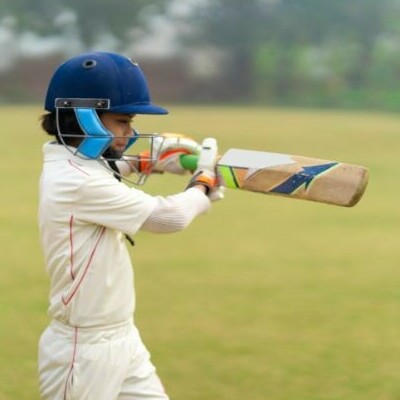
Use this second grip if you want to hit more cross bat shots, like pulls or hooks.
Even where you place your hands on the cricket bat handle can alter the power and type of shots you can best perform. Having your hands in the middle of bat handle allows a good combination of power and control.
But placing your hands at the top of the handle allows you more power, particularly when playing straight down the ground, while a grip lower down on the handle closer to the shoulder of the bat will allow you more control, which is great for horizontal shots like pulls or hooks.
You can even change your grip during the innings, depending on the type of bowling that is coming your way or the current match situation. But you should always practice first in the nets before doing anything new on the cricket pitch.
Stance and balance: The foundation of a good bat hold
So, you’ve figured out where and how to hold the bat. What about how to hold yourself when preparing to take strike? It’s crucial to establish a solid stance and balance at the crease. It doesn’t matter how strong and powerful the grip you have if you are not balanced in your stance to take full advantage of it.
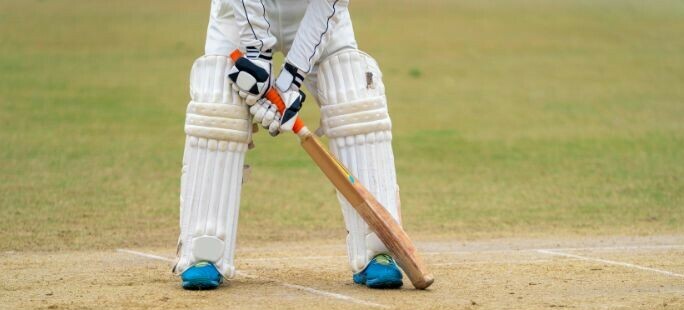
For a proper stance, the feet should be shoulder-width apart, with the weight evenly distributed between them. This ensures stability and mobility at the crease, but like everything else written here, you might find a position or a stance that better suits you.
Start with the basics of what we mention here, but be willing to tinker with it during practice.
Mastering the bat hold requires practice and refinement. Players can improve their grip by incorporating specific drills and exercises into their training program.
This could include shadow batting drills, where players practice shots without a ball; when doing this, just focus on maintain a steady grip and fluid bat movement. If things don’t feel natural when doing this drill – the placement of your feet, or the positioning of your hands – adjust accordingly.
You can also use batting aids like grip trainers to help reinforce muscle memory and strengthen your hands and wrists.
Common mistakes to avoid when holding the cricket bat
As with any skill, mastering how you hold your bat involves identifying and fixing common mistakes that could hinder your performance. One error that many players face is gripping the bat too tightly. This can easily restrict movement and bat speed.
Another mistake is allowing the bottom hand to dominate the grip. This leads to a lack of control and stability during shots. Be mindful of these pitfalls and keep practicing property technique; doing this you can refine and improve your batting performance.
Adapting your grip for different batting techniques and shots
In cricket, versatility is key. This extends to your batting grip. Different pitches and different bowling types require different shots and techniques … which also require subtle adjustments to your grip to perform these shots. For powerful shots like drives and pulls, you need a firmer grip, as this allows you to control the bat’s movement and generate more power.
On the other hand, for shots like glances and flicks, which are more delicate and precise, a looser grip helps as this allows for greater manoeuvrability and finesse.
Understanding when and how to adapt your grip for each situation is essential for mastering the art of batting.
Learning from the pros: How professional cricketers hold their bats
Professional crickets are masters of their craft. Studying their batting techniques can provide valuable insights for amateur players. Observing how they hold their bats, and the subtle nuances of their technique can guide you and help you improve your own batting prowess. You can do this by watching live matches, studying video footage, or attending coaching sessions.
It is important though that you remember not to merely copy the pro you are observing. What works for them, may not feel comfortable and work for you. Use the pro as a basis, and then adjust during practice as required. Ultimately, you will become a more proficient and successful batter on the cricket pitch.
Now we want to hear from you. Have you had to change your batting grip because you found your previous one wasn’t working? Tell us your story in the comments below.
And come back as we continue our series on batting techniques, with How To Play The Back Foot Defence.

